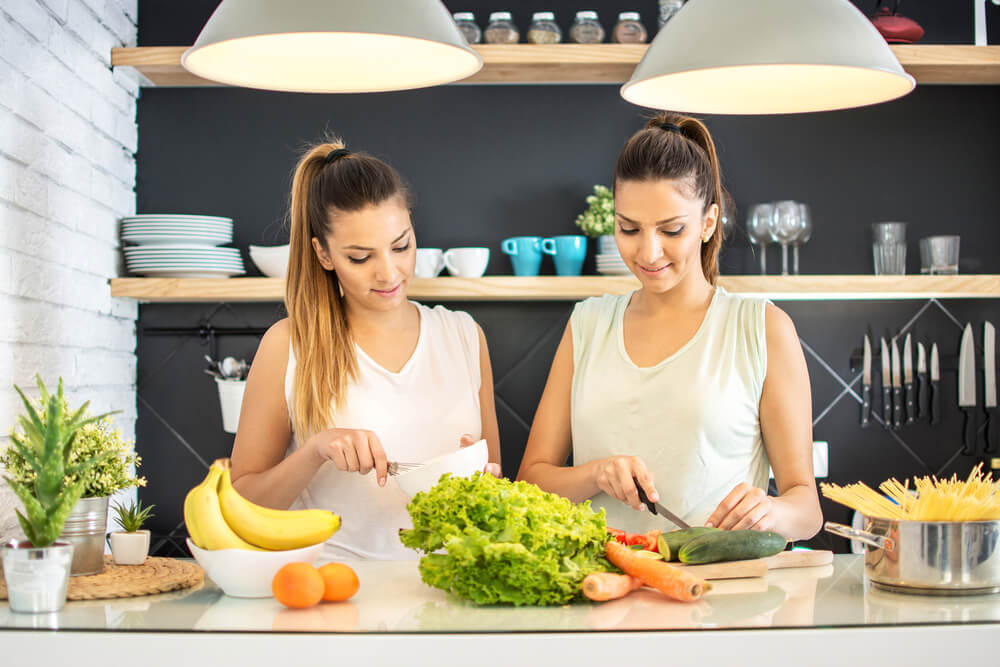Salads sound like the perfect “healthy” meal – a base of colorful vegetables accented with flavor. But there are landmines everywhere at a salad bar. I mean, the macaroni salad alone would set you back a day’s worth of fat and calories (and probably sodium too).
But don’t worry, you can still get all the same deliciousness and still make it healthy.
- Make sure to start with the darkest greens available – romaine instead of iceberg, or better yet try mixed greens, spinach, or kale.
- Add any fresh vegetable you like, from green peas to red bell peppers to tomatoes and broccoli and zucchini. Mushrooms are also a good bet, although not technically a vegetable.
- Here’s where we have to tread lightly. To reduce the sodium content, it’s best to avoid anything pickled. And to reduce fat and calories, it’s really a good idea to avoid anything with a mayonnaise base.
- Cheese does provide a healthy amount of fat, but use sparingly. I like to pick bleu or feta because you can still get that creamy flavor with a smaller helping.
- Avocado also provides healthy fats, but again it is high in fat so don’t go overboard.
- Protein is key in making sure that you stay full until the next meal time. Avocado and cheese do have protein, as do lean turkey, flaked tuna not tuna salad), salmon, boiled shrimp, or hard-boiled eggs.
- Two of the biggest salad pitfalls are usually located at the end of the line – crunchy toppings and dressing. For crunch, a sprinkle or handful of nuts is considerably a better choice than croutons or wonton strips. And transparent dressings are better than creamy.
When you make the right decisions, a well-built salad will taste great, leave you satisfied, and keep your diet in check.


Pingback: Amazing Tips for Slimmer Legs | Beauty Tips, Hair Care